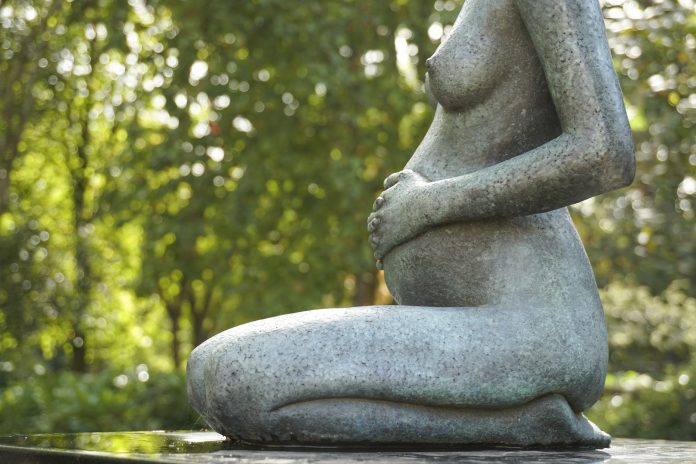Dr Diana W. Bianchi, Director of the Eunice Kennedy Shriver National Institute of Child Health and Human Development (NICHD), exposes the need to address maternal mortality
Mavis Stephens, a mother and U.S. Army veteran, recounted her near-death experience giving birth. She shared her story at a recent maternal health forum sponsored by my institute, reminding the audience of how precarious pregnancy can be for women and their offspring.
“Pregnancy can be a rollercoaster ride,” Stephens said. “Before you get on a rollercoaster, there are signs that say, ‘You need to be this tall to ride. If you’re not, don’t ride.’ We need those signs for pregnancy.”
I agree.
Stephens, who is African American, was in her 20th week of pregnancy when she started to see signs of trouble. She mentioned to her doctor that she was having headaches and feeling dizzy. He suggested she stay off her feet and cut back on dietary salt. At 27 weeks, she had blurred vision and unbearable headaches and dizziness. Her doctor took her blood pressure and immediately sent her to the nearest hospital emergency room. Tests showed she was struggling with preeclampsia, a pregnancy-related high-blood pressure disorder.
Within a day, she was fighting to stay alive. She had an emergency C-section, but her baby boy died within two days. Her story was a wake-up call that we all should heed.
The United States has one of the worst maternal death rates in the developed world. The U.S. Centers for Disease Control and Prevention (CDC) estimates that 700 women die each year as a result of pregnancy or delivery complications. Death rates are higher among women of colour. Even celebrity status and wealth aren’t enough to insulate women from these pregnancy-related health threats, as tennis champion Serena Williams and singer/songwriter Beyoncé have recently shared. According to CDC, black and American Indian/Alaska Native women are about three times more likely to die from a pregnancy-related cause than white women.
In addition, serious and life-threatening complications following pregnancy, called severe maternal morbidity, have been steadily increasing. CDC estimates that since 2014, more than 500,000 U.S. women have been affected by severe, unexpected complications from labour and delivery.
My institute, NICHD, was founded more than 50 years ago specifically to understand and improve maternal health and pregnancy outcomes. Our research led to the development of the first home pregnancy test in the 1970s and has made several contributions to reducing maternal morbidity and mortality, but much more needs to be done.
Maternal deaths can result from a variety of causes: a pregnancy complication, a chain of medical events started by the pregnancy, worsening of an unrelated condition because of the pregnancy and other factors. Death may occur during pregnancy, childbirth, in the 48 hours immediately following childbirth or up to six weeks after the pregnancy ends. Complications that do not result in death may cause short- or long-term health problems or disability, which can deeply affect a woman’s quality of life. A full spectrum of research is needed to better understand the causes of these deaths and how to prevent them in the United States and around the world.
Some of NICHD’s recent research has found that taking low-dose aspirin may prevent the onset of preeclampsia in high-risk women. NICHD-funded researchers have also found that vaginal birth after a prior C-section—commonly called VBAC—is safe under certain situations and leads to lower infection risk and faster recovery. An NICHD-supported network helped determine that a low-cost drug, called misoprostol, prevents maternal prevents maternal haemorrhage (extreme bleeding) after delivery. This treatment has saved many lives in the developing world.
However, there is still much to be accomplished to not only understand the biomedical causes of maternal mortality but also understand the full social and behavioural factors that contribute to these deaths. Recent NICHD workshops highlighted the need to identify research gaps in data collection, clinical obstetrical factors and health disparities, specifically racial and ethnic inequalities, in the care of women before, during and after pregnancy. Our Community Engagement Forum on Improving Maternal Health in early April 2019 was an opportunity for women, such as Mavis Stephens, to share experiences with health care providers and advocates.
In the biomedical realm, an ongoing NICHD research project called PregSource® allows women to track their pregnancy experiences. This crowdsourcing project uses confidential questionnaires to gather data directly from pregnant women in hopes of informing future studies aimed at improving maternal and obstetric care. In addition, NICHD has invested more than $60 million to develop novel technologies that help us better monitor the development of the placenta throughout pregnancy.
Among other accomplishments, the Human Placenta Project has supported the design of a handheld device that monitors the flow of blood and oxygen between mother and fetus. This small device may one day be used by expectant women to detect early warning signs of complications and to seek care accordingly.
Any maternal death is one too many. It shouldn’t happen in the United States or anywhere else. We know there are warning signs, like the ones Stephens experienced. Let’s work together to figure out how to read those signs, intervene and make a difference for every expectant woman and her family.
Dr Diana W. Bianchi
Director
Eunice Kennedy Shriver National Institute of Child Health and Human Development (NICHD)
Tel: +1 800 370 2943
NICHDInformationResourceCenter@mail.nih.gov
www.nichd.nih.gov
https://twitter.com/nichd_nih











